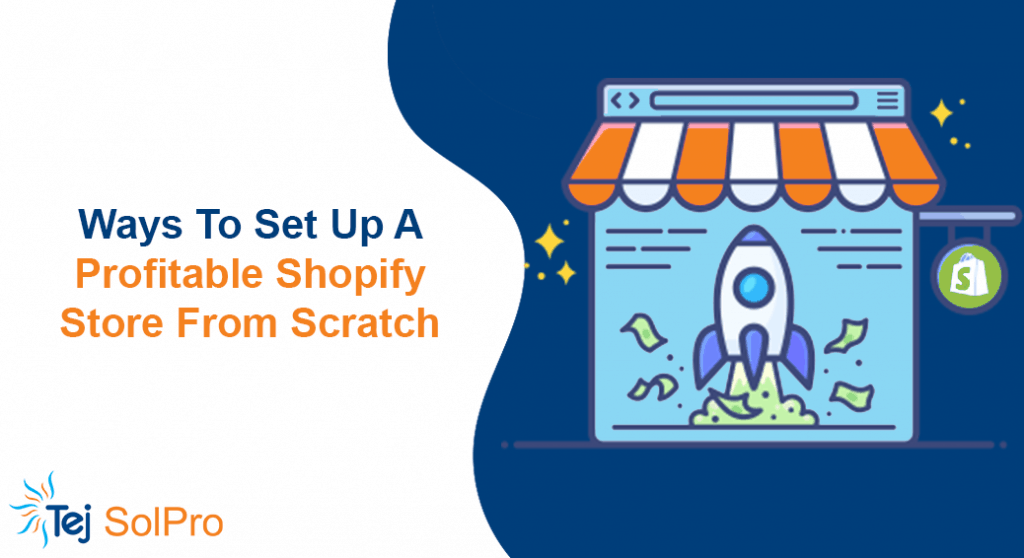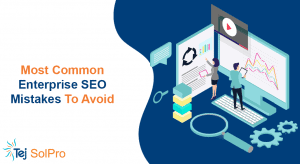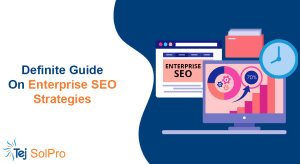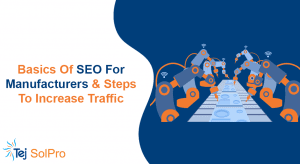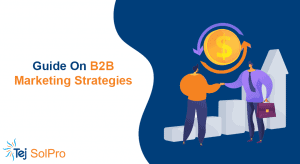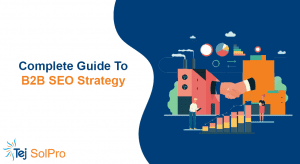What is Shopify?
This is a modern world, and the modern world needs new hacks to make things simpler. Technology has helped us in making that possible. In today’s world, there is almost no domain that cannot function smoothly, more so with the advent and evolution of technology.
Shopify is an eCommerce platform that makes work easy for all those people who are looking for an effective and quicker way of selling their products. Irrespective of the size of their businesses, Shopify has made it very easy to sell products-be it in stores, on social media platforms, in-store, or any other way that you would want to sell it.
Shopify makes the job easier by providing all the benefits that are needed to make a business successful. To top it, Shopify as an eCommerce platform has all the optimization and customization tools that give the liberty to all those brands trying to sell their products, the free will to design their store the way they want.
A lot of how much traffic their shopping portal attracts depends on how it looks to the buyers. This customization is only possible because of technology and how the Shopify store has made it so much more fun to do business and sell products and for the buyers as well, to experience a whole new world of digital purchasing.
How does the Shopify platform work?
An e-commerce platform that has all the perks of online selling in place can be quite exciting and a fresh take to do business, however, it is important to know the right tools to use in these platforms, and more importantly, know what they entail to make it a successful online selling experience.
Shopify has been curated and built on the prospect of giving a one-stop destination for all those businesses that want to sell their products and gain maximum profit. To make good and effective use of this platform, one must know how exactly the platform works.
There is a range of products, and each of them has a certain list of services that are available on Shopify to sell those products to the interested or potential buyers. Shopify is the perfect way to enhance your business and get it better. Let us have a look at the various product ranges and their associated services.
1. Physical products: As the name very well suggests, these are the range of products that are curated or made by you by hand. This category can contain products that you have manufactured or you plan to take the way of drop shipping these products to your potential customers.
Examples: Jewellery boxes, t-shirts, etc.
2. Digital Products: When we are talking about an e-commerce platform, it is obvious that there will be a category of digital product selling as well. These are all those that can be bought electronically and used in that format as well.
Example: E-books, Audio downloads, etc.
3. Memberships: This is for all those business empires who might have the possibility of providing any sort of membership facilities to their special customers.
Example: Gym subscriptions, Yoga Studio subscriptions, etc.
4. Classes: Online classes can also be booked and purchased through an online platform and Shopify gives that opportunity to conduct those lessons easily.
Example: Online classes.
5. Services & Consultations: Health appointments, therapist appointments – these all fall under the category of consultations. Shopify has a category for these kinds of services as well where potential customers can book their consultation services online.
6. Rentals: These are quite similar to the selling of physical products as you hire or rent out props, clothing as per your need, however, they are categorized under the rentals category and are one of the services that Shopify provides.
7. Ticketed experience: Be it movies, concerts, or your traveling to and fro tickets –Shopify has a category to easily book those tickets and enjoy a hassle-free experience in doing so through their online platform.
Therefore different categories of products have different ways of selling them. The tools are different and the way to effectively reach out to their potential customers are different.
Hence it is important to be aware of the various categories and how Shopify is built to make sure the selling of the products or providing the necessary services is done in a particular order, to gain maximum profit.
Ways To Set Up A Profitable Shopify Store From Scratch
Considering this is the most trusted e-commerce platform that business owners from all over the world trust to sell their products from, there is a very systematic way of setting up the required account and starting selling your products. Those steps must be followed to make sure that the selling process does not become messy and is carried out effectively.
Here are the steps that need to be followed:
1. Start your free trial on Shopify.
Visit the correct official website by typing in the URL. Once you are on the official website, you can hit the sign up form button to create an account. Registering and making your account on the official website is the first and foremost step to get to the other steps.
Once you are done filling up the required details in the sign-up form – you get the option of ‘Start free trial’.
Once you click on that you will be asked to fill in some more minor essential details such as your name, address, phone number, etc. Then you click the ‘I’m Done’ option and you are ready for the next step.
2. Pick a theme and customize your Shopify store.
Your account and product page needs to be unique, or else Shopify itself suggests ways of making it so. Starting from your username to the layout to the theme that you pick has to have a connection with what you are selling, only then will it attract the necessary buyers.
The best part is that Shopify has its own set of themes that have been thoughtfully curated by some talented designers. You also get the option of customizing those themes as per the need of your Shopify store. Make sure to check the reviews and preview your theme before finally applying it.
3. Add Shopify Apps that make your Life easy in your store.
This e-commerce platform has been built with the sole purpose of making it easy and quick for you to sell your products. So make sure to add the Shopify apps that you must be needed for the particular range of products that you are selling.
It is best to keep it uncomplicated and not add apps that won’t be used, also it can get quite messy on such a large platform as the Shopify Store. So have a clear vision of what you are selling on Shopify and what is the kind of Shopify apps will be needed to do so effectively.
4. Add the products you want to sell in your store
As you are exploring the website, when you take the cursor towards the left side of the webpage- there is an option called ‘Products’ that is seen- once you click on that- you get the option of ‘Add products’- now the trick is to be smart enough and as many details as you would want to let your customer know about the products.
Also, make sure to use the essential key points that are sure to grab the attention of your buyers. Keep Shopify SEO in mind and use the words for description appropriately. Do not forget to upload a good image of the product with clarity.
5. Group and categorize your products
This is another smart tactic to attract loyal customers to your products. Make sure to form collections of the products you are selling. There might be instances where few of the products have common features in them.
When you group them and form a collection, a buyer searching for one of the products will automatically get to view the others in the same collection, which might be sharing features.
These groups are usually like – Products on sale, products of a particular size, products of a particular season to name a few.
6. Create necessary pages for your store
You need to understand it is not all about how you decorate your product page and how the product looks or how well the description of the product has been written on the page.
It has to do with technical features as well. When a buyer approaches the page of your product, they need to have some basic information provided to know and trust your brand better.
Hence you need to add the necessary pages such as the- contact us page, the about us page, FAQ page, policy pages. You only have to click on the ‘Online Store’ option which will lead you to the option of ‘Pages’- and you can then create all the important pages that as a business platform, you should have.
7. Change your shipping settings as per your preferences
Shipping is one of the penultimate and most complex steps in an e-commerce business. There are a plethora of responsibilities that need to be kept in mind when it comes to shipping such as shipping destinations, packaging costs, product weights, career rates- to name a few- amidst all the others.
However, Shopify gives you the luxury of customizing your shipping preferences as per the needs of your business. You can pick from a range of features such as offering free shipping or offer a free pick up and drop- off service – it depends on what product you are selling and what kind of shipping benefits will entice your potential buyers.
8. Set up your tax settings
One of the core responsibilities of a business that is associated with the selling of products is that they have to pay keen attention to the taxes that are received every time a buyer places an online order. This amount then needs to be sent to the government.
Shopify makes this process a much-organized one as they have a default sales tax rate installed on their business platform which helps in making all the necessary tax calculations.
You get the option to set up your tax settings if there are certain specific rates for some of your products- it depends from product to product. The option of ‘Taxes’ is available under ‘Settings’.
9. Set up your payment gateway
Now after all the selling, it is time to focus on your income as well- as an owner and as a store. Shopify has made this process also extremely easy as they have a range of almost 100 third-party payment providers and as long as you are not selling something illegal and your business store is set up in one of the countries that support Shopify.
This eCommerce platform has all the necessary payment acceptance methods lined up and the options can be found under ‘Payments’ which is available under ‘Settings’. There are also no extra transaction fees that are charged which makes the offer even more attractive to its buyers.
10. Test your order system
To ensure that your order system is functioning properly, you can do fake testing without really paying anything using Shopify’s Bogus Gateway. However, if it is a real payment gateway that you want to test, the first step is to make sure that you have set up your preferred payment gateway method.
Follow the right steps like any customer would do when they are placing an order from your store, fulfill the payment option by using the credible credit card details. Once you have confirmed the order system, make sure to immediately cancel the order to get the money refunded to your account.
11. Setup Your Domain with Shopify
Your domain name needs to be unique so that your buyers are instantly interested in visiting your page. Shopify has a list of domain names made to be available to you, you can pick one from that list and save a lot of time. In case you are a bit confused about what can be a very suitable name for your store – you can even get some tips from Shopify.
You can set up your domain name by going to ‘Settings’ and then click on ‘Domains’ – there you will find an option of ‘Add an existing domain’.
Another tip provided is to make sure that you have your primary domain set up and then select the option of ‘Redirect all traffic to this domain’ – this ensures more traffic to your store.
12. Do the basic on-page SEO optimization
For online platforms of selling products, nothing can seal the deal like using the right SEO optimization keywords. Everything in your store needs to have some Shopify SEO optimization tips attached to it to ensure that customers are directed to your store.
The various steps involved are the optimization of the URL of your store, your metadata, the headings that you use for your product pages that shows the name of the product, optimization for the body text which is the description written under the products.
They need to have the right primary and secondary keywords that are ranking on top in the SEO optimization list, image alt tags are also very crucial and need to be SEO optimized.
13. Remove password protection & Launch your store
This is the final step where you are ready to launch your store and see how your online business shapes up. You need to go to ‘Settings’ and then ‘Preferences’ and remove your password protection to finally open your business. Once that is done, you launch your store and you are ready for feedback and get better with time!
Conclusion
Thus all you need to do is follow the above steps to create your successful Shopify store in 2020. All of them are explained in detail to make you aware of the various features involved to make this online store as personal, customized, and effective as possible for the profit of your business.
Shopify is the biggest e-commerce platform and one of its first, with time it has developed and roped in all kinds of beneficial features that have helped a lot of businesses to set up their store online and ensure maximum sales.
The customization process becomes much easier and quicker as it is all online and technology makes it much more fun to set everything in place. The step-by-step guide is also helpful for beginners to know how to operate on this platform and get their businesses flourishing.

